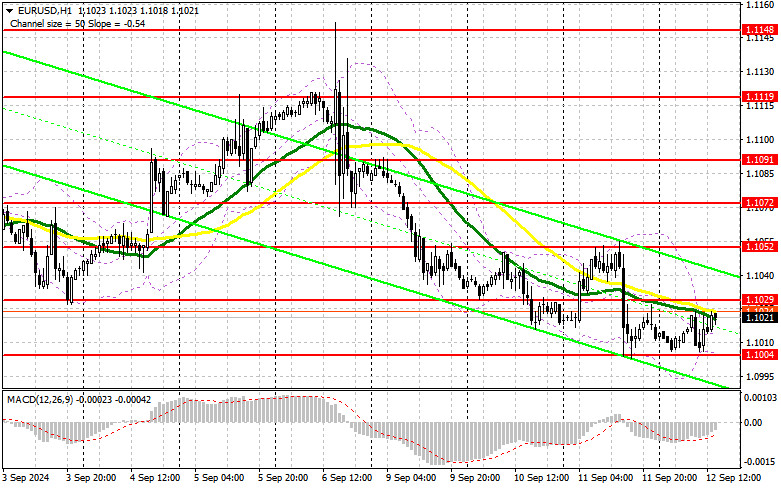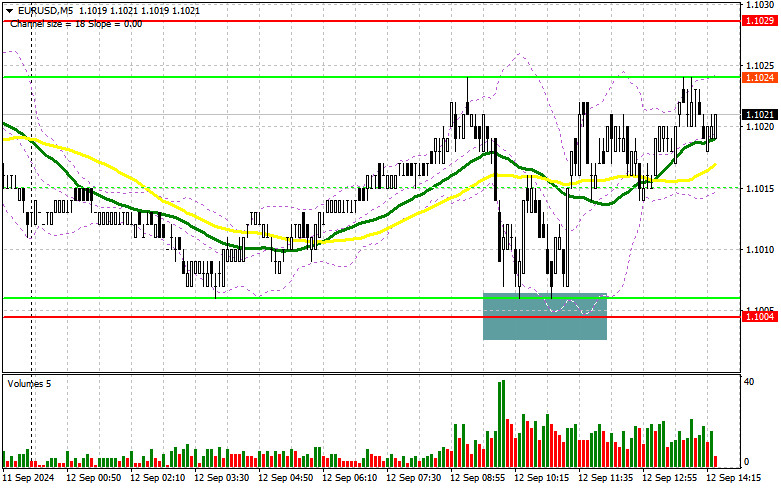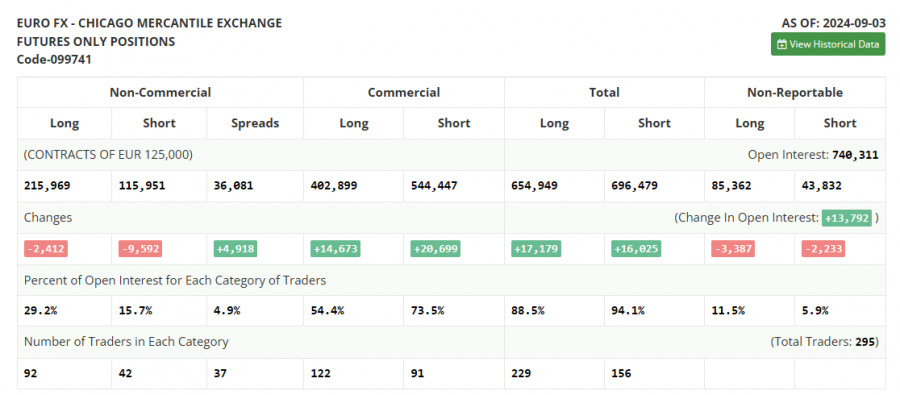In my morning forecast, I highlighted the 1.1004 level and planned to make trading decisions based on it. Let's review the 5-minute chart to analyze the developments. A decline followed by a false breakout at this level led to a buying opportunity, resulting in a 20-point rise before demand for the euro decreased. The technical outlook for the second half of the day remains unchanged.
To open long positions on EUR/USD:
I discussed the market's reaction to today's European Central Bank decision in my morning forecast, so there's no need to reiterate it. In addition to the ECB's decision, there's also interesting U.S. data related to inflation. A steeper-than-expected decline in the Producer Price Index (PPI) could prompt the Federal Reserve to consider more aggressive monetary policy easing. If inflation aligns with economists' forecasts, similar to yesterday's consumer price data, or if it rises, pressure on EUR/USD is likely to increase. I plan to enter after a decline and a false breakout near the 1.1004 level – the weekly low. The target will be a correction to 1.1029 resistance, above which the pair has struggled to break. A breakout followed by a retest of this area would lead to a rise, with the chance to test 1.1052. The final target will be 1.1072, where I will close positions. If EUR/USD drops and fails to show significant activity near 1.1004 in the second half of the day, sellers will retain control, leading to a larger sell-off. In this case, I will open positions only after a false breakout at the next support at 1.0979. I plan to open long positions from 1.0952 on a rebound, targeting a 30-35 point upward correction during the day.
To open short positions on EUR/USD:
Sellers made their presence known in the first half of the day, but a major sell-off didn't occur. If the euro rises following U.S. data, a false breakout around 1.1029 will provide an opportunity to open short positions, targeting the 1.1004 support – the weekly low. A breakout and consolidation below this range, especially with higher U.S. inflation, will offer another selling point, aiming for 1.0979. The final target will be 1.0952, which would invalidate all buyers' short-term growth plans for the euro. I will take profits there. If EUR/USD rises and bears fail to appear at 1.1029, where moving averages favor sellers, buyers will have a chance to test the 1.1052 resistance. I will sell there after a failed consolidation. I plan to open short positions upon a rebound from 1.1072, aiming for a 30-35 point downward correction.

In the COT (Commitment of Traders) report for September 3, there was a reduction in both long and short positions. Despite a significant drop in euro sellers, it did not affect the pair's bearish technical outlook. The euro is likely to continue weakening against the dollar this week, as the upcoming ECB meeting is expected to reveal another rate cut in the Eurozone and further monetary policy changes. However, this doesn't cancel the euro's medium-term uptrend, and the lower the pair goes, the more attractive it becomes for buying. The COT report shows that long non-commercial positions decreased by 2,412 to 215,969, while short non-commercial positions dropped by 9,592 to 115,951. As a result, the gap between long and short positions widened by 4,918.
Indicator Signals:
Moving Averages
Trading is happening slightly below the 30- and 50-day moving averages, indicating market equilibrium.
Note: The period and prices of the moving averages are considered by the author on the H1 chart and may differ from the definition of classic daily moving averages on the D1 chart.
Bollinger Bands
In case of a decline, the lower boundary of the indicator around 1.1029 will act as support.
Description of Indicators:• Moving average: Determines the current trend by smoothing volatility and noise. Period 50, marked in yellow on the chart.• Moving average: Determines the current trend by smoothing volatility and noise. Period 30, marked in green on the chart.• MACD indicator (Moving Average Convergence/Divergence): Fast EMA period 12, Slow EMA period 26, SMA period 9.• Bollinger Bands: Period 20.• Non-commercial traders: Speculators, such as individual traders, hedge funds, and large institutions using the futures market for speculative purposes.• Long non-commercial positions: Total long open positions of non-commercial traders.• Short non-commercial positions: Total short open positions of non-commercial traders.• Total non-commercial net position: The difference between short and long positions of non-commercial traders.












